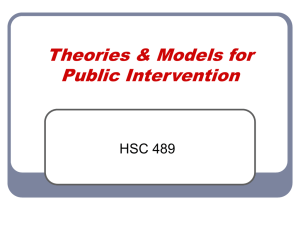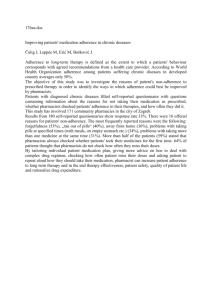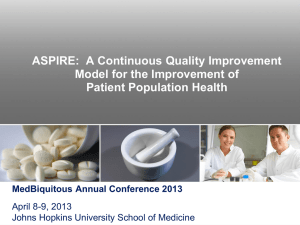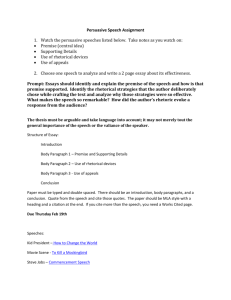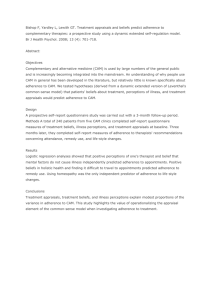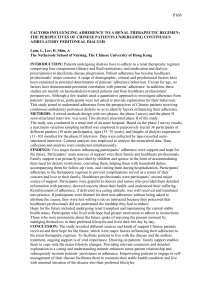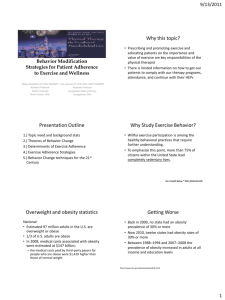Exercise Adherence
advertisement
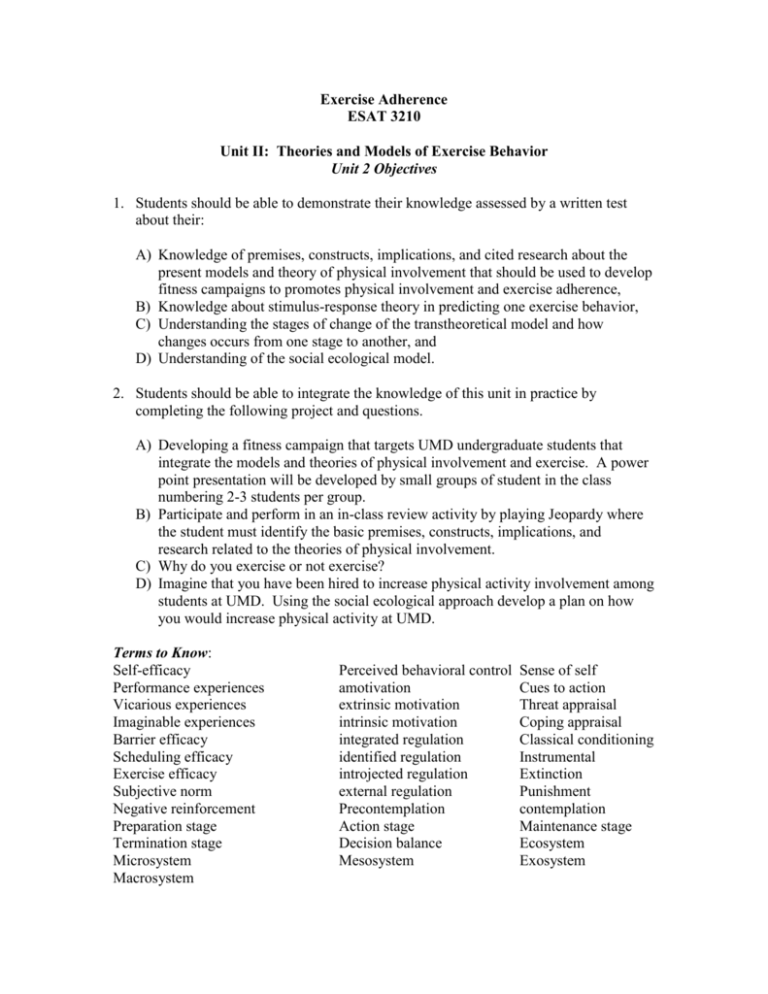
Exercise Adherence ESAT 3210 Unit II: Theories and Models of Exercise Behavior Unit 2 Objectives 1. Students should be able to demonstrate their knowledge assessed by a written test about their: A) Knowledge of premises, constructs, implications, and cited research about the present models and theory of physical involvement that should be used to develop fitness campaigns to promotes physical involvement and exercise adherence, B) Knowledge about stimulus-response theory in predicting one exercise behavior, C) Understanding the stages of change of the transtheoretical model and how changes occurs from one stage to another, and D) Understanding of the social ecological model. 2. Students should be able to integrate the knowledge of this unit in practice by completing the following project and questions. A) Developing a fitness campaign that targets UMD undergraduate students that integrate the models and theories of physical involvement and exercise. A power point presentation will be developed by small groups of student in the class numbering 2-3 students per group. B) Participate and perform in an in-class review activity by playing Jeopardy where the student must identify the basic premises, constructs, implications, and research related to the theories of physical involvement. C) Why do you exercise or not exercise? D) Imagine that you have been hired to increase physical activity involvement among students at UMD. Using the social ecological approach develop a plan on how you would increase physical activity at UMD. Terms to Know: Self-efficacy Performance experiences Vicarious experiences Imaginable experiences Barrier efficacy Scheduling efficacy Exercise efficacy Subjective norm Negative reinforcement Preparation stage Termination stage Microsystem Macrosystem Perceived behavioral control amotivation extrinsic motivation intrinsic motivation integrated regulation identified regulation introjected regulation external regulation Precontemplation Action stage Decision balance Mesosystem Sense of self Cues to action Threat appraisal Coping appraisal Classical conditioning Instrumental Extinction Punishment contemplation Maintenance stage Ecosystem Exosystem Unit 2 Topics Multiple choice and short answer essay questions will be developed from the below concepts for the Unit 2 test. Topic 1: Theories and models of exercise behavior: Part I (Chapter 3) What is the basic premise of the social cognitive/self-efficacy theory? What are the basic constructs of the social cognitive/self-efficacy theory? What implications can we make about the social cognitive/self-efficacy and exercise adherence? What does research cite about the social cognitive/self-efficacy theory and exercise adherence? What is the basic premise of the theory of reasoned action? What are basic constructs of the theory of reasoned action? What implications can we make about the theory of reasoned action and exercise adherence? What is the basic premise of the theory of planned behavior? What are the basic constructs of the theory of planned behavior? What implications can we make about the theory of planned behavior and exercise adherence? What does research cite about the theories of reasoned action and planned behavior? What is the basic premise of self-determination theory? What are the basic constructs of self-determination theory? What implication can we make about self-determination theory and exercise adherence? What is the basic premise of the personal investment theory? What are the basic constructs of the personal investment theory? What implications can we make about the personal investment theory and exercise adherence? What does research cite about the theories of self-determination and personal investment theories? What is the basic premise of the health belief model? What are the basic constructs of the health belief model? What implication can we make about the health belief model and exercise adherence? What does research cite about the health belief model and exercise adherence? What is the basic premise of the protection motivation theory? What are the basic constructs of the protection motivation theory? What implication can we make about the protection motivation theory and exercise adherence? What does research cite about the protection motivation theory and exercise adherence? Topic 2: Theories and models of Exercise Behavior II (Chapter 4) What is the difference between classical and instrumental conditioning? Discuss the four events that influence one behavior related to stimulus-response theory? How can stimulus –response basic events be used to predict one’s exercise behavior? Transtheoretical model is founded upon what premise? Discuss how one’s behavior changes through the six stages of the transtheoretical model? What cause one to change their behavior from on stage to another? What is the difference between experiential and behavioral processes? What roles does decision balance and self-efficacy play in changing one’s behavior? What are the implication about the transtheoretical model and exercise adherence? What is the basic premise of the social ecological model? Discuss the various form of the ecosystem? What are the implication about the social ecological model and exercise adherence? Unit 2 Assessments 1. Written test based on text and power point presentation 2. Jeopardy review game (in-class activity) 3. Power point presentation of their campaign based on the models
